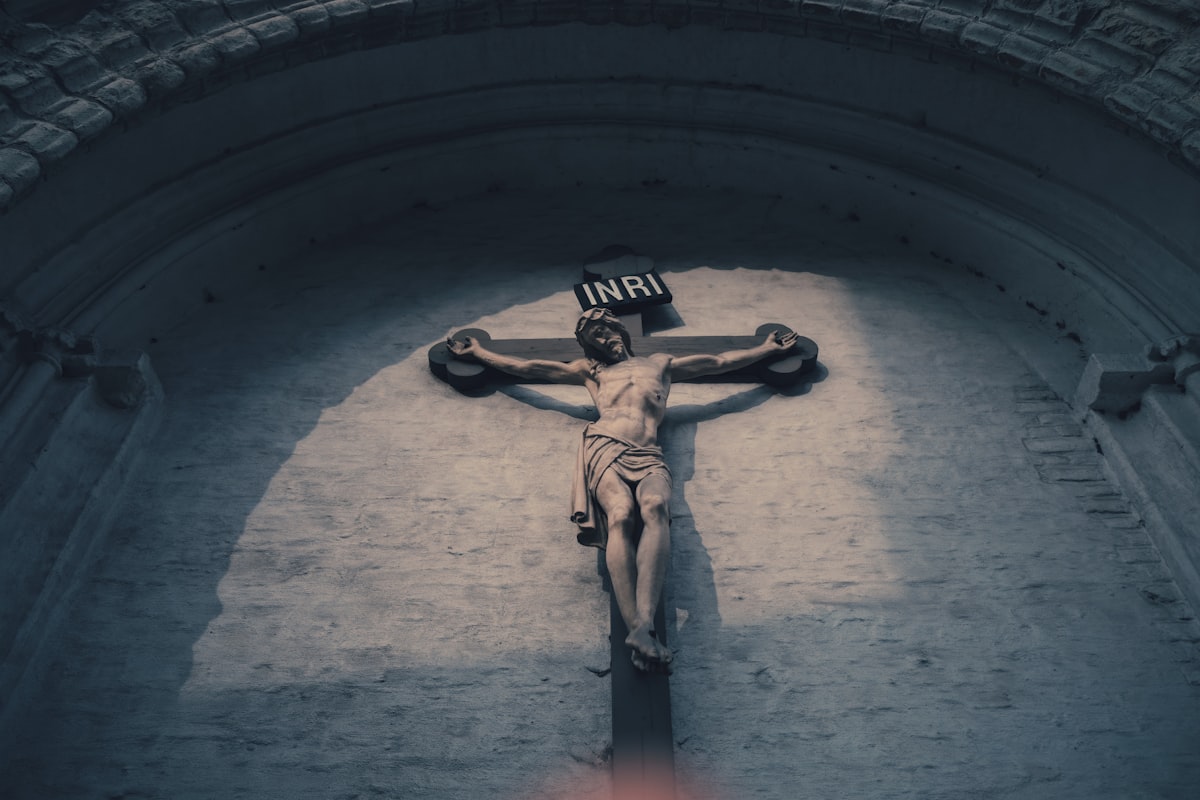World Religions: The Buddha and the Christ
Jesus Christ presents a vision of life and reality that is far superior to that of the Buddha. For the historic Christian world-and-life view is uniquely reasonable, testable, viable, workable, livable, and hopeful.

This guest article by Kenneth Samples originally appeared on reasons.org
Among the world’s great religious leaders, only two had such a profound impact that contemporaries inquired as to the very nature of their being.1 People wondered whether Siddhartha Gautama (the Buddha) and Jesus of Nazareth (the Christ) were more than mere human beings. While both are known as great teachers and profound souls, the identity, mission, and message of these two men couldn’t be more different.
The Buddha
Like Christianity, the religion of Buddhism is traced to a single individual. That person is Siddhartha Gautama (c. 563–480 BC). While mixtures of myth and legend make it impossible to completely reconstruct the life of the Buddha, there is a historical core of information known about him.2
Siddhartha was born into the Indian Sakyas clan in the sixth century BC in Nepal, near its border with India. Siddhartha’s father was the feudal lord of the Sakyas people and created a life of luxury for his son. Siddhartha is said to have had three palaces with 40,000 dancing girls at his disposal. He received a cultured education that included studies in the arts, warfare (martial arts), and philosophy. He later married a neighboring princess and they had a son together.
Siddhartha gradually grew discontented with his life of affluence and hedonism. Upon taking a chariot ride into the city he encountered the “Four Passing Sights” (an old man, a diseased man, a dead man, and a monk). These sights represent Siddhartha’s first glimpse of human misery and they profoundly impacted him. For the first time he began to reflect upon the problem of suffering. At age 29, he renounced the pleasures of the princely life, left his family and privileged position behind, and became a truth-seeker. He wanted to uncover the causes and cure of the universal problem of human suffering.
Siddhartha’s search for enlightenment lasted six years and moved through three distinctive phases. First, he studied Hindu philosophy and meditation from the Indian Yogis. Second, he encountered some Jain monks (an offshoot of Hinduism) and adopted their extreme form of asceticism (self-denial). Nearly starving himself to death, he found asceticism no more revealing than his former life of affluence. Third, now fatigued and desperate for genuine enlightenment, he sat in the lotus position before the Bodhi tree in meditation. He decided that he would remain in this “immovable spot” until he was enlightened or dead of starvation. On the forty-ninth day, Siddhartha Gautama experienced the ultimate transformation of consciousness (“Nirvana”) and became “the Buddha”—the “enlightened one” or “awakened one.”
Nirvana is the supreme goal of Buddhism for it breaks the cycling of rebirths (reincarnation). The word “Nirvana” literally means “blowing out” the flame of passion (desire is eliminated). Understood as extinguishing the self (nothingness, the Void), some define Nirvana as continuation of consciousness in a mystical state.
This enlightened state allowed Buddha to understand the causes of, and solution to, the human cycle of suffering. The Buddha’s teaching core consisted of the Four Noble Truths.
Four Noble Truths
- Dukkha: The true nature of existence is suffering (sickness, pain, fear, death).
- Trishna: Misery is rooted in ignorant craving (Tanha: desire for attachment to the illusory world).
- Cessation: Eliminating the desire for attachment can abolish suffering (stop the desiring and the suffering stops).
- The Eightfold Path: Stop the desiring through concentrated effort (preparation for Nirvana). The Eightfold path consists of moral, intellectual, and spiritual development leading to enlightenment (transformed consciousness).
The Buddha subsequently conducted a 45-year missionary career of converting people to his religion of mystical enlightenment. He died around 80 years of age.
The Buddha and the Christ
The title “Buddha” means one who has awakened from an illusory state of consciousness. The title “Christ” is Greek for the Hebrew word “Messiah,” meaning the “anointed one”—the special one who would do God’s bidding.
The Buddha sought to eliminate suffering through resignation. Christ suffered with and for sinners in order to reconcile them to God.
Eight Ways Buddha and Christ Differ
- History: While the life of the Buddha is wrapped in legend and evolving speculation, Christ is a historical figure whose life, death, and resurrection are rooted in facts of history.
- Nature: Though the Buddha held an awakened state of consciousness, he was merely a human being, whereas the Christ reveals himself to be both God and man (a single person with both a divine and human nature).
- Character: The Buddha, even with an enlightened consciousness, had moral weaknesses and limitations. Christ, on the other hand, was morally perfect.
- Mission: The Buddha’s mission was to help others achieve Nirvana. Christ’s mission was to rescue sinners by providing a sacrifice for sin.
- Role: The Buddha himself is not crucial to the essence of Buddhism (the Four Noble Truths are the heart of the Buddhist philosophy). On the other hand, historic Christianity is all about Christ (emphasizing his person, nature, life, death, and resurrection).
- Suffering: The Buddha sought to eliminate suffering through resignation. Christ suffered with and for sinners in order to reconcile them to God.
- Life: Buddha’s message is life denying. Christ’s message is life affirming.
- Future: The Buddha offers many lives of suffering with the only hope being extinction (Nirvana). The Christ offers resurrection for the dead and eternal life with God.
Jesus Christ presents a vision of life and reality that is far superior to that of the Buddha. For the historic Christian world-and-life view is uniquely reasonable, testable, viable, workable, livable, and hopeful.
| Some Major Tenets | |
| Buddhism | Christianity |
| Problem: Karma (attachment) | Problem: Sin |
| Need: Emptiness | Need: God-shaped hole |
| Solution: Resignation | Solution: Faith and Repentance |
| Ultimate: Nirvana | Ultimate: Personal Redemption |
| Assurance: No | Assurance: Yes |
| Deity: Atheism, Polytheism | Deity: Trinitarian Monotheism |
Worldview Orientation | |
| Buddhism | Christianity |
| Worldview: Monism | Worldview: Theism |
| Cosmos: No beginning/Endless | Cosmos: Creation ex nihilo |
| Humans: No soul (anatman) | Humans: Imago Dei |
| Knowledge: Mysticism | Knowledge: Revelation |
| History: Cyclical | History: Linear |
Endnotes
- Huston Smith, The World’s Religions (San Francisco: Harper, 1991), 82.
- Winfried Corduan, Neighboring Faiths (Downers Grove, IL: InterVarsity, 1998).
Philosopher and theologian Kenneth Richard Samples is a senior research scholar at Reasons to Believe with an MA in theological studies. Kenneth had worked as senior research consultant and correspondence editor at Christian Research Institute and his articles have been published in Christianity Today, Christian Research Journal, and Facts for Faith. He holds memberships in the Evangelical Philosophical Society, the Evangelical Theological Society, and the International Society of Christian Apologetics.





Comments ()